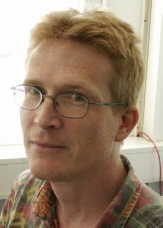
Forschungszentrum Karlsruhe GmbH
Institut für Nanotechnologie
Postfach 3640
D-76021 Karlsruhe
![]() ++49 7247 82-6411
++49 7247 82-6411
![]() ++49 7247 82-6368
++49 7247 82-6368
![]() Christof.Haettig@int.fzk.de
Christof.Haettig@int.fzk.de
PROJECTS
Development and application of explicitly-correlated coupled-cluster methods for nonlinear optical properties
PRINCIPAL INVESTIGATOR
 |
PD Dr.
Christof Hättig Forschungszentrum Karlsruhe GmbH Institut für Nanotechnologie Postfach 3640 |
TOGETHER WITH
 |
Prof. Dr.
Willem Maarten Klopper Universität Karlsruhe Physikalische Chemie Engesserstraße 15 |
ABSTRACT
A general applicable approach to derive quantum chemical
methods for nonlinear optical (NLO) properties and excitation
energies is response theory. In particular, coupled-cluster (CC)
response theory has in recent years become a standard approach
for accurate calculations of optical properties since these are
presently the only methods allowing to calculate NLO properties
of many-electron systems with an accuracy of a few percent]. As
other correlated wavefunction approaches, coupled-cluster
response methods are limited in their applicability by a slow
convergence of the coulomb hole with the one-electron basis set
and a steep increase of the computational costs with basis set
size. For ground state energies this problem can be overcome by
combination with the R12 ansatz to explicitly correlated so-called
CC-R12 methods.The goal of our project is to apply the R12 ansatz
to coupled-cluster response theory to make these methods
applicable to larger molecules while increasing by the same
ansatz their accuracy. During the previous application period we
have implemented CC-R12 response theory at the level of the
approximated singles-and-doubles model CC2 and investigated some
basic aspects of the standard approximations applied in the
implementation of the R12 ansatz. The results obtained show that
present implementations of the R12 ansatz lead to problems in the
calculation of molecular properties which become in particular
pronounced if applied in the framework of response theory to
excitation energies and optical properties. The aim for the next
application period will be to modify and generalize the
implementation of the R12 ansatz such that it leads to stable and
systematically improved results also for molecular properties and
excitation energies.